Compost – What We’ve Learned
We are sharing an article that we’ve written for magazine publication and has been in the October 2013 issue of Acres USA as well as the Fall 2013 edition of Small Farmer’s Journal. Compost is one of the foundational cornerstones of any successful garden, but has been over-thought and made much too complex by people wanting to make it “faster” or sell you some piece of equipment or machinery to make it “better”. It really is simple to make and doesn’t take any equipment, only needing time to accomplish. After all, who turns and works the compost in nature?
This is about our experiences and what we’ve learned from about 15 years of composting. Enjoy!
What We’ve Learned from Compost
Having been gardening for 15 years and composting for almost as long, we quickly realized that with our climate and native soils, improving the soil’s health and quality were one of the most important things we could do to help our garden. We are located in North-central Arizona, which is a semi-arid high grassland environment. Historically there would be 18 – 20 inches of moisture per year, but we have been lucky to see 10 – 12 inches in a good year over the past 20 years. There is almost always a south-westerly breeze which pulls moisture from any unprotected ground. The soils are really varied in structure with many different types in close proximity to each other. It is not uncommon to have a good productive soil with a caliche or high sandy soil within 20 – 50 feet. Our garden is a good sandy loam, with decomposed granite about 30 feet to the east and a heavy clay caliche soil 20 feet to the west.
Good, aged compost has helped us build the health and fertility of our soil and overcome many of the challenges we face in our garden. It improves the soil structure, brings the micro nutrients and biological life to the soil, along with earthworms and larger soil dwellers. Mulching the compost helps to retain needed moisture and brings the soil moisture level from about 2 inches down to the surface of the soil/mulch interface. We use a combination of straw and wood chips for our mulch.
There is much we have learned that we have applied to our approach in creating great compost, along with observations and education we have sought out along the way. We are happy to share some of our experiences and knowledge about compost.
We don’t turn our compost, partly from being busy and not wanting to invest in machinery or equipment, also partly from research, reading and talking with those who have learned how to create some incredibly rich, earthy compost that looks like highly fertile soil. Most compost tumblers are too small for our needs and a tractor or turning equipment is an expensive purchase for the occasional use.
Our compost piles will age for at least a year before being added to the garden. We have learned that the slow aging is more beneficial to the decomposition process as well as not losing nearly as much nitrogen to off-gassing as happens with the hot and fast methods. Another benefit is the decomposition is much more thorough, destroying weed seeds, pathogens and any unwanted chemicals much better in a slower composting setup. In our climate, we need to water our compost occasionally to keep it going. This is easy to gauge, as the rich earthy smell goes away when the moisture level drops. We water about every 2 weeks on average during warmer weather.
(Cautionary note for those that use city water with chlorine in it: chlorinated water will kill the micro-organisms in the compost and soil that you are working to help! If you have chlorinated water, either fill buckets and let them sit overnight to off-gas the chlorine or buy a chlorine filter that attaches to the garden hose to remove it. Thanks to Marguerite from IL for pointing this out!)
In our research and education of how to make great compost, we consistently saw traditional, proven methods from different countries, climates and approaches that worked. Many of them were very similar, adjusted to adapt to the particular environments of where they were used. The French intensive method used 3 feet of fresh horse manure and straw to heat the cold frames over the winter in Paris, then were pulled out and added to the compost piles to finish decomposing. In the fall the aged compost was added back to the growing beds for the upcoming winter. The Russian dacha gardening tradition shows how continuous composting and mulching with wood chips will improve the soil, overcoming both heavy winters in the north and drought conditions in the south.
Another thing that we found is that European traditions and older American traditions applied compost thickly, about 3 – 4 inches at a minimum, while modern gardening applies it rather thinly – like expensive imported marmalade on toast – and then wonder why they don’t get the results they expect.
After the year of aging and decomposing, our compost looks and smells like rich dark soil. This is especially pleasing to see in comparison to our pale tan native soils! Once we apply it to the garden beds, we mulch it with several inches of straw, watered well to keep it in place. Recently we have begun experimenting with wood chips as mulch, with good results. The wood chips help retain and gain moisture better than the straw, with the added benefit of attracting earthworms faster. The wood chips act like a layer of permeable insulation, attracting the cooler and moist early morning air that sheds its water when it meets the warmer temperature of the soil. This moisture travels into the soil and is retained. It is surprising to see and feel how moist the soil is under 2 – 3 inches of wood chip mulch when there has been no rainfall or drip irrigation at all!
Our approach to making the best compost possible is to combine or “stack” techniques, similar to the bio-tech industry, but it is much more effective with no worries about future side-effects! We will walk you through the different techniques we use and why we use them.
We have used straw bales as the container for our compost system for years, but have recently started using shipping pallets to more effectively utilize the composting area. The pallets are almost 3 times as tall as the straw bales and will give more compost in the same footprint. Wood chips are put down first, about 3 – 4 inches thick. These help retain moisture at the bottom of the pile before it seeps into the soil, as well as helping to attract earthworms and adding nutrients as they break down. We will scatter wood chips throughout the pile as we add horse manure. The nitrogen of the manure helps in the breakdown of the lignin in the wood chips, creating richer and more fertile compost.
Our two horses provide the bulk of the manure, along with the occasional load of cow manure. We are careful to get our cow manure from non-feedlot sources to avoid any contamination from antibiotics, glyphosate or industrial chemicals. This has supplied enough finished compost for our 14 thirty foot long raised bed garden that is our home and trial garden for our heirloom seed business. We apply compost twice a year, mid fall and early spring.
Straw is used to mulch the top of the pile and provides aeration as more manure is added to the top. About 1 – 2 inches of straw is added across the top about every two feet of depth. This is continued as the pile grows in height. As the straw bales that make up other bins start to fall apart, they are added to the new piles.
Milk is diluted 50/50 and sprayed on the pile to help feed the microorganisms and jump starts the decomposition process. The amino acids, proteins, enzymes and natural sugars that make milk a food for humans and animals are the same ingredients in nurturing healthy communities of microbes, fungi and beneficials in compost and garden soil. Raw milk is the best, as it hasn’t been exposed to heat that alters the components in milk that provide a perfect food for the soil and plants, but any milk will work. Using milk on crops and soils is an ancient technique that has been lost to modern industrial agriculture.
Molasses adds readily available sugars to the compost that will skyrocket the microbial activity, with the addition of needed mineral content. We use one cup of molasses to a gallon of water and spray onto the pile once it is about 1 – 2 feet tall.
Coffee grounds are added routinely as the pile builds to help with moisture retention and buffer our alkaline soils. Traditionally, coffee grounds were seen as an acidic addition but recent research shows that coffee grounds act more as a buffer, moderating either an acidic or alkaline pH toward a more neutral one. In arid regions coffee grounds can be added up to 25% by volume of the pile. They are a good nitrogen source to help keep the decomposition going as well as being a natural earthworm attractant! Sourcing the coffee grounds comes from local coffee houses, restaurants, Starbucks, etc.
Hardwood lump charcoal or Bio-Char is added as the pile grows to help the compost in many ways. The most obvious benefit is to add carbon to the soil. Charcoal has a lifetime benefit of several hundred years, as shown by Brazilian university studies on the Amazonian “Terra Preta” sites in the rainforest. It must be hardwood lump charcoal and not briquettes, which are processed with chemical fire accelerators, sawdust and other industrial waste. We like to crush it to about the size of a grain of corn to increase its surface area and effectiveness.
Charcoal acts like a sponge for the first 6 months or so, absorbing minerals and nutrients from the surrounding soil or compost while it “charges” or “activates”. After that it becomes an active beneficial component of the soil, providing housing and food sources for the microbial communities. Mycorrhizal Fungi will colonize charcoal and help to monitor the surrounding soil health, moving nutrients around as needed by plants. It was previously thought that mycorrhizae would only colonize the roots of plants, but it has been found that they will also inhabit charcoal. This will help them live throughout a winter when little root life or activity is present. The charcoal is sourced in 40 pound bags from buying clubs such as Costco or Sam’s Club, and can be obtained in larger quantities directly from the manufacturer.
Trace minerals are added such as Azomite or Elemite to increase the available mineral and trace elements that are often low in today’s feed. This helps the decomposition of the pile, is absorbed in the charcoal and carries over to help feed the garden soil.
Once the compost pile is at the top of the bin, we cover it with a generous layer of straw and build a new bin. Then we pretty much ignore the active pile except for watering when it needs it. Every couple of months we check the pile to see how it is progressing, and see how much it has started to drop in height. Once the pile is finished it will have dropped about 1/4 to 1/3 of its original height.
This system has evolved over several years to the present one and has continually produced better and better compost. This approach may sound like a lot of work, but with the system set up there is very little additional work after cleaning the horse pens. We usually get a full wheelbarrow of fresh manure every other day, and we rotate the addition of minerals, charcoal and wood chips on top of the wheelbarrow load which is then dumped onto the pile, putting the additions underneath the load. Once we have about 2 feet above the last straw layer, we add a few inches of straw. The scent of the active pile is that of a handful of rich fertile earth, so we gauge when to water when we can’t “smell the earth” as we walk by. The additional time needed to add to the nutrients range from the time it takes to add a couple of shovelfuls of wood chips or a scoop of Elemite to the wheelbarrow, to a couple of minutes to crush a few handfuls of charcoal.
No matter what your scale, from backyard home gardener to small acreage, these concepts can be scaled up or down to suit your particular needs and animals. Look to your neighborhood or community for feedstock and supplies for the compost pile. Most horse owners will be happy to give away their excess manure, as most do not compost it and it becomes a waste management issue. Some farms will have excess straw or broken bales that are not useful for them but would be excellent feed for your compost pile.
Good composting – like much of good agriculture – takes a certain amount of patience and observation, letting Mother Nature work her miracles on her schedule. Think about how nature decomposes and composts leaf litter in the forest or grasses in the pasture, they aren’t “done” in 30 to 60 days! Once the cycle is established, you will always have some great compost becoming available for the next feeding of your garden soil.

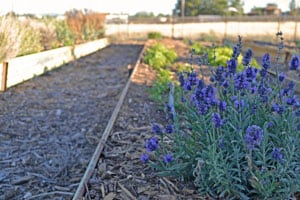
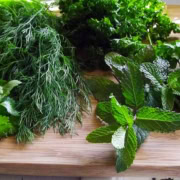


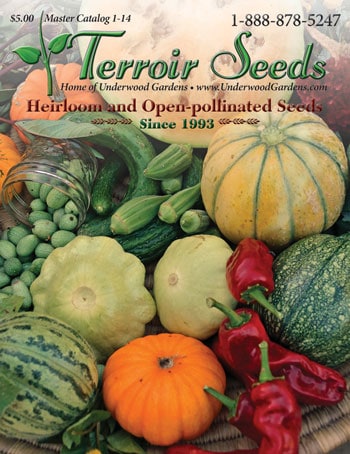
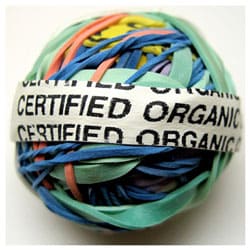
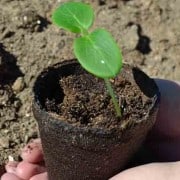
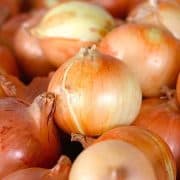

Great article. You guys are amazing. Happy New Year to you. Cecelia
Thanks Cecelia, glad you enjoyed it!
Thank you for all your great information. I’ve passed this along to several family gardeners.
Regards,
Betty
Thanks Betty, we really appreciate it! Glad to be able to help.
Thank you for the articles, Stephen. You mentioned your raised beds, which appear–from other photos– to be made of wood. Do you use a rot resistant wood like cedar, or treated lumber, or just regular wood, accepting that it will rot? I have made several beds with recycled corrugated roofing that was stacked on my property, but have used it up and need to make some wooden beds. In the past I have used treated lumber, covered on the inside with a double layer of plastic feed bags, but am inclined now to use Douglas fir 2x8s, two high, after reading that Douglas fir has a life expectancy of 15 years when used for fence posts.
(For those interested in beds made from steel roofing: I lay the sheets (24″ wide)on their long edges, after leveling off the ground with a mattock. The metal sheets are held upright with pointed vertical redwood 2x2s driven in to the ground every 2′. Drive them in about 8″ deep, and them tilt inward about an inch, as the dirt will push them back out. Use a level! This makes steel walls 24″ high, and as long as the roofing sheets, with redwood stakes on the outside.
During this process, I shovel dirt against the inside face of the roofing sheets to keep them standing up. Next, I screw horizontal 2x4s, on edge, to the outside of the redwood stakes, flush with their tops. Be sure to build the corner joints well to keep the bed from coming apart! On top of this, I screw 2x6s, mitered at the corners, making a horizontal frame for the top of the bed and covering the edges of the metal roofing.
I run a 1/4″ irrigation line up one corner along one of the 2×2 stakes, and through a hole in the roofing near the top edge. I incorporate a shutoff valve and fasten it to the stake so I can easily turn the water off and on with one hand. Steel roofing can be sawn easily with a hand held circular saw. There are special blades for sheet metal, but I just use an old wood blade. Wear ear plugs!)
Bart, our raised beds are made from recycled galvanized roofing steel that is about 30+ years old and very heavy. We split them down the middle to shorten them, then screwed them together with heavy duty self-tapping screws. I expect them to last for another 30 years!
You can use wood and treat it as you’ve described, or straw bales which will last for 3 – 5 years. Straw bales are easy, cheap and will get you started, and when they do start to fall apart, you add them to the compost pile!
What a great article….I found a lot of info that will come in handy for me.
I am slowly getting used to gardening with very sandy soil in Northern Michigan. What a difference from the clay soils I knew back when I lived in Illinois. My biggest problem has been keeping the mulch layer from “burning up” in the sun. Our summers are extremely dry and whatever I put on top of the soil typically dries up and blows away. I like the idea of using wood chips for mulch….glad you had success with it. I had always read it depleted nitrogen in the soil as it broke down, but that didn’t make sense to me if worms are attracted to it and are, well, you know—pooping up a storm-LOL!. I’m going to try this now that I’ve read this. Thank you!
Excellent article, guys – thanks so much for posting it! Love how you describe the science of what your components bring to the party.
I’m a firm believer in slow composting, too. As a provider of heirloom vegetable plants through farmer’s markets, we’ve been dismayed to see local soil/amendment providers send people home with compost that’s way too hot (especially in a desert climate where we already deal with high soil temp issues for a good portion of the year) and still contains colonies of active bacteria that steal soil nitrogen and retard plant development. Our beautiful plants stop thriving the second they hit the mix, and our customers become so discouraged!
Education is everything in creating a larger community of confident home gardeners, and you guys are doing great work getting both your clean seeds and your informed knowledge out there. Appreciated!
Thanks for the kind words, Tracy! Composting has become a big business today, with some folks feeling that it is a quick road to riches and disregard the quality of the finished product. Like anything agricultural, it takes time and more than the 60 day wonders out there would have people believe.
I enjoyed the compost pile story!
Thanks Jonna, hope it gives you some new ideas of how to make better compost with less work!
Sue, there has been a long history of wood depleting nitrogen in this country that I’ve read, but isn’t echoed in other countries. Russia, for example, has studied wood chip mulch in its hot and dry regions since the 1910s, with extensive university research in the 1930s and 1940s showing that there is a small initial decrease in available N, but negligible over the longer term. You are very correct to observe the presence of worms, as they won’t flourish in poor soils!
Have been composting for 30 years, but learned something new this summer:
PLANTS PREFER PARTIALLY-FINISHED COMPOST, not the fully rotted stuff.
I was doing “root-intensive planting”, since Iowa’s climate has gotten crazy–cold until 3rd week of June, then hot and dry as blazes. (See http://sri.ciifad.cornell.edu/aboutsri/methods/index.html to get started; basically, stop planting so “intensively” and give every plant PLENTY OF ROOT SPACE full of great soil.)
At first, I dug every tomato plant a bushel-sized hole and planted them in a mix of soil and compost (plus magnesium and calcium). But I ran out of finished compost and had to move to the 7-day-old pile of leaves and chicken-pen sweepings (manure and oat straw–use oat straw for faster decomp and fewer seeds and diseases in your compost later).
And guess what? The TOMATOES planted in UNFINISHED COMPOST did a thousand times better than the ones in regular compost or in my well-kept deep beds.
So now we know.
Great simple ideas I can use. But did I miss the part about adding plant debris and vegetable scraps? When, how much, what to avoid? Thanks for helping me with what might be just obvious to other readers…
Hi, I’m so excited to have stumbled across this site! I have not been successful at composting before, but don’t want to give up. I may have missed this in the previous replies, but where do you suggest I get wood chips? Also, at what point can I add fruit & veggie scraps from the kitchen? Thanks so much!
Tracy, we get wood chips from our local city trash transfer station where they chip the branches and tree trimmings that homeowners bring in. I would check with your local town or city to see if they do something similar. Another resource is the companies that trim trees along power lines and right of ways. They usually have a bucket truck along with another truck that has a tow-behind chipper. Stop and ask them, often they have to pay to dump the chips, so are willing to give them and even deliver them to your house if you are reasonably close by.
You can add kitchen vegetable scraps any time, they will just work into the pile and decompose.
Good to hear from you Pat! I’ve covered most of those questions in another of my composting articles – Compost- Nourishing Your Garden Soil. It goes over several of the techniques that I mention here in more depth, as well as linking to a great beginning composting guide.
Good to hear, but be careful of jumping to wrong conclusions or drawing sweeping conclusions from one experiment. Please realize that I’m not saying that what you did was wrong, or that you shouldn’t continue to experiment and refine your approach. I just want to make sure we are comparing apples to apples.
From what I’m reading, you have been using aged compost and then were forced to use a much younger compost. Were the aged compost and young compost the same composition? It sounds like they might have been different, as you mention the chicken manure in the young compost, which will have high levels of nitrogen and phosphorus. If the tomatoes did really well, that might indicate that the regular compost is somewhat lacking in nitrogen and phosphorus, which tomatoes need lots of. One cause of aged compost lacking N is using today’s popular hot-and-fast methods, which off-gas 3 times more N than the older, slower and cooler approaches. The hot-and-fast approach also doesn’t kill as many pathogens and weed seeds, which is counter-intuitive, but has been proven in university research.
However, after saying all of this, I do remember an article in Small Farmer’s Journal some years back that was from the 1950s or 1960s and talked about exactly what you’ve described – using younger, less aged compost to re-fertilize the fields. They were using horse and cow manure as the base stocks, but cow manure is almost as active as chicken manure when young. I’ll have to look it up!
You’ve come across some very interesting approaches that really bear more experimenting and research, thanks very much for sharing them!
Thanks so much for this information. I have been trying to compost for a couple years now, but not overly successful. These methods should really help!
You are welcome Melissa! Make sure to also read “Compost- Nourishing Your Garden Soil” for a more complete introduction.
We live in a wooded area in northern Illinois, and have been composting for many years. Thanks for your well-written article, I’ve learned some things to try this year. Just one thing to add, be careful what kind of water you add to your compost pile. About 10 years ago, during a very hot and dry summer, I decided to help my compost continue to decompose by spraying it regularly with the hose. Unfortunately, the chlorine in our city water apparently killed the bacteria and other micro-organisms in the pile, and composting stopped. It took me a year or two to get everything balanced and working well again. Now if it’s very dry and I feel the need to add moisture, I fill several buckets with water and let them sit for a day or two to outgas the chlorine.
Marguerite, thanks so much for your comments – they are so appropriate! We live in a rural area with a well, so we don’t have chlorine or fluoride in our water, so often forget that others do have to deal with these things. I will amend the article to include a cautionary tip!